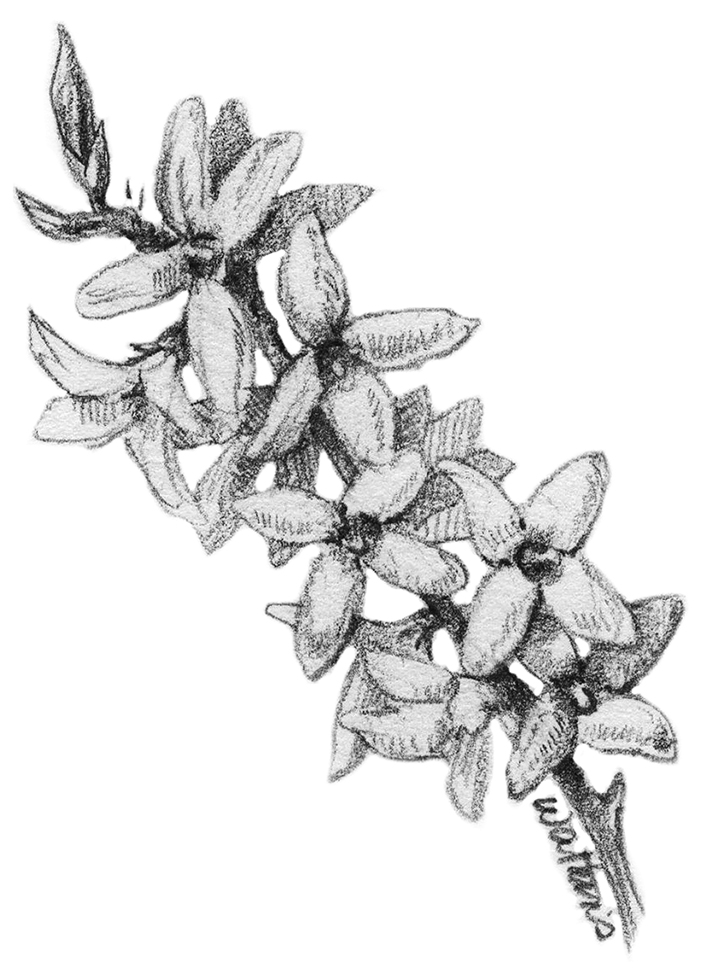March, Forcing the Issue
Through the Garden Gate
By Leslie Watkins
This time of year, most of us in the North have had about as much of snow, subzero temps and ice as we could want. For gardeners, it’s a good time to prune fruit trees and woody shrubs. If you are seriously done with winter, there are some steps you can take to hasten spring’s arrival. Bring in some woody stems from flowering shrubs and force them to blossom early.
On an above-freezing day select branches with round, plump flower buds. You are looking for buds that are just starting to swell. The long, pointy ones are generally leaf buds. Using a pair of sharp clippers, select branches with lengths of one to three feet and cut at an angle. Bring the cuttings inside and place them in a vase of warm water for an hour or two to allow them to warm up and rehydrate. Then recut the stem and give them fresh water. Keep them in a cool room, changing the water and misting regularly to keep the buds from drying out (covering with plastic can help). Depending on the plant, it should take between two and five weeks for the buds to start opening. When they do, put them in a bright spot where you can enjoy them. You may find that some of your cuttings send out rootlets. These can be transplanted back outside to start new shrubs for your garden.

Some of the easiest plants to force are forsythias. They are named for the royal head gardener and botanist William Forsyth from Scotland. He was a founding member of the Royal Horticultural Society in England, founded in 1804 and still going strong today. Forsythias, also known as the Easter tree, are tough and forgiving. If you have a gas tank or other utility you’d like to hide, a forsythia hedge may be just the thing. The shrubs grow quickly, up to two feet a year, and can readily be shaped as espaliers, trained on pergolas and planted on top of walls, allowing the branches to trail gracefully downward. They are great planted on banks for erosion control and are tolerant of poor soils. Forsythias work well in spots that require occasional access with vehicles. Just cut them down to make way, then let them grow back again for privacy. Older plants may produce more leaves than flowers. To rejuvenate, cut back hard to about eight inches high in late winter. Leave four to five healthy shoots, since flowers are formed on the past season’s growth, and cut back again the following year. Once the shrub is flowering well, pruning to shape should be done just after the blossoms fade.
Forsythia fruit is used in Chinese herbal medicine, and the flowers provide early nectar for some pollinators. The wood is used as a bow for both the Korean silk-stringed instrument called an ajaengand the Chinese ya zheng, an ancient zither with a more than 2,500-year history.
Fred McGourty, the well-known gardener and author from Norfolk, would say, “The only good forsythia is a dead forsythia,” but I think even he would bgrudgingly agree that a billowing cloud of bright yellow forsythia on a cool spring day is a welcome sight to see.
Woody Plants for Forcing
Amelanchier
Crabapple
Dogwood
Forsythia
Hawthorn
Lilac
Magnolia
Pussy Willow
Quince
Redbud
